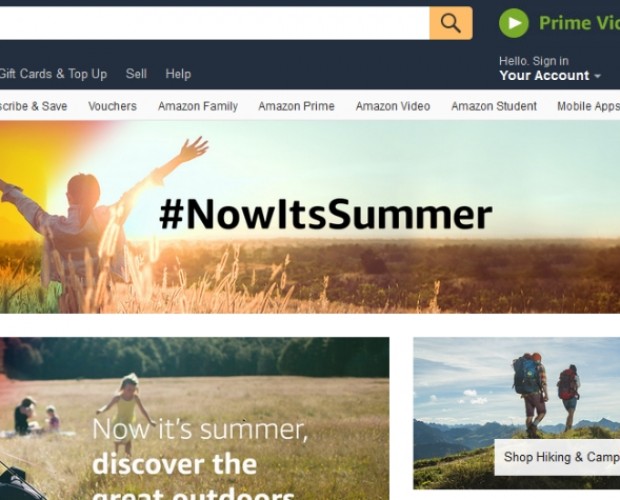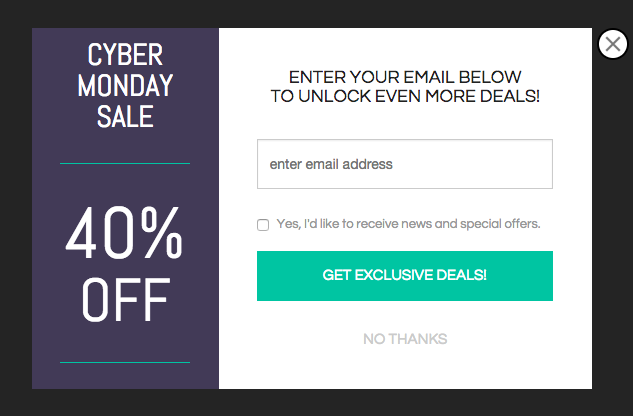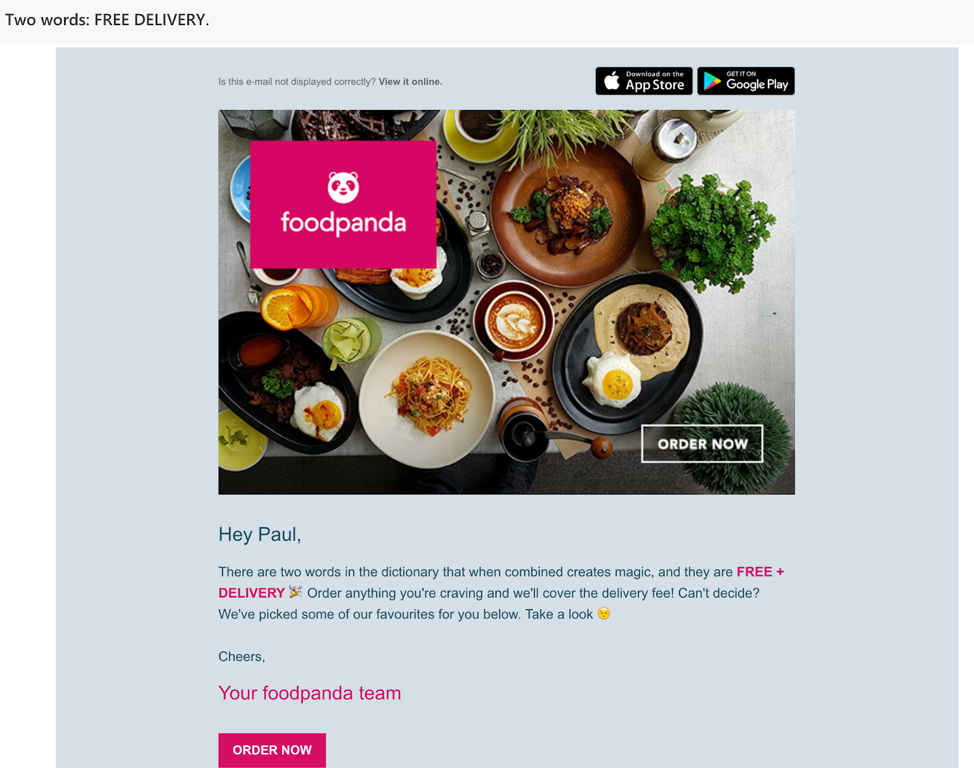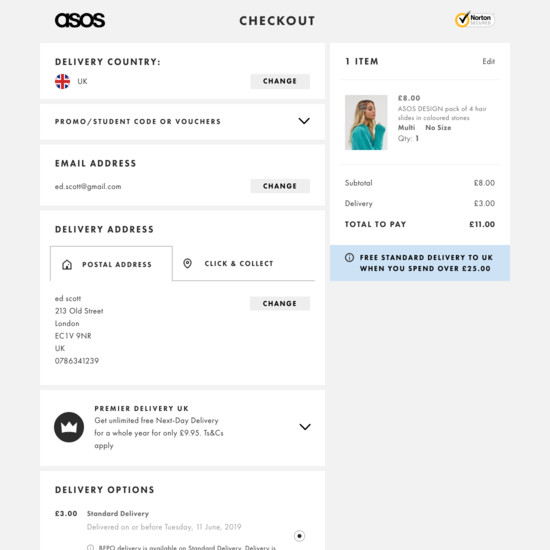Ecommerce personalization has come a long way since the start of the eCommerce boom. But it should come as no surprise when content is personalized to the shopper’s needs, likes, and even using their name, they’re far more likely to engage and purchase from that brand.
Don’t take my word for it. Take a look at the stats that prove the benefits of eCommerce personalization:
- 80% of shoppers are more likely to buy from a company that offers personalized experiences.
- 44% of consumers say that they will likely become repeat buyers after a personalized shopping experience with a particular company.
- Marketers see an average increase of 20% in sales when using personalized experiences.
First, what is eCommerce personalization?
Summing it all up, eCommerce personalization is the act of showing individualized offers, product recommendations, and other content to your visitors based on their previous actions, demographics, and other personal data.
Today, we’ll dive into the 10 genius ways to use eCommerce personalization to attract and convert customers.
1. Deliver Weather-Sensitive Personalization
Based on the weather, consumers change the way they shop, whether it’s postponing, pushing, or pivoting purchases based on their needs. For example, if winter is approaching, it’s more likely that people will be searching for sweaters and coats rather than sunglasses and swimsuits.
Weather-Sensitive Personalization is an overlooked and simple way to personalize your eCommerce shopping experience.
Ecommerce Personalization Example: Amazon’s #NowItsSummer

Brands like Amazon, Nordstrom, and Old Navy understand that personalizing eCommerce content and products during seasonal or weather changes shows that you know your customers’ needs and the changing times.
Even if your products are not weather-related conditions, you should still make an effort to change how you position your products due to weather personalization.
2. Create Landing Pages for Specific Products
When you’re running social media or digital marketing ads, it’s good to practice using a specific landing page or product page to help. This helps you to maximize your conversions and perfect your eCommerce personalization.
Instead of throwing out various ads, you can now hyper-focus on your best sellers or product categories to attract their ideal consumer. This helps you to generate more qualified leads, aka potential sales, which interns allow you to spend less or smarter.
Creating personalized landing pages for your eCommerce store to promote specific products also removes distractions that your homepage might otherwise have when visitors are scrolling through your site.
Ecommerce Personalization Example: The Scent Market

With Wishpond’s Canvas, Wishpond’s marketing team was able to create a stunning landing in minutes for The Scent Marketing. The landing page would be used to house customers who clicked on Facebook ads, emails, or social media content.
The Scent Market’s landing page was also integrated with a Shopify button so that customers could purchase directly on the landing page with ease.
The team wanted to ensure that the visitor could effortlessly access our free shipping offer without moving from page to page manually, which would affect sales and conversions.
This tactic resulted in making The Scent Market over $34,000 in sales in 32 days.
3. Send Personalized SMS Mobile Marketing Campaigns
Everyone is glued to their phones, so why not use mobile marketing to target potential customers or remarket to past customers?
Similar to email marketing strategies, SMS marketing focuses on sending updates, promotions, discounts, and reminders directly to a customer’s phone number.
Collect phone numbers with every order from past customers regardless of their country and location. Of course, it’s crucial to let them know that charges may apply based on their location. Use SMS remarketing to remind them to restock on their products or update them on sales.
Ecommerce Personalization Example: Domino’s Pizza

Dominos regularly sends personalized messages based on past purchases, reminder, and personalization of their customers SMS subscription. Below are just some of the ways you can implement personalized SMS messages to increase sales and reduce customer churn:
- Purchase confirmations
- Welcome messages
- Birthday texts
- Industry updates
- Breaking news alerts
4. Recommend Product Categories Based on Browsing Behavior
With a snip of code or an integrated app, you can upsell by showing customers recommended products solely based on their search history.
Unlike browsing, when visitors make an active effort to search for products, it showcases their desire for a specific item. Sometimes they’re looking for the best alternative or answer. Instead of having them go back and forth, show off their browsing history below to make their search and buying process easier.
Ecommerce Personalization Example: J Crew

5. Personalized Discounts Based Over a Certain Amount Popup
Bare International found that high-value coupons and offers are nearly 100% effective in getting both existing and inactive customers back into a store. Not to mention, customers prefer receiving high-value coupons for one-time use over lower-value coupons that can be used again and again.
You can personalize your coupon based on first-time shoppers, returning customers, or their search history.
When people visit a page on your website, the popup appears. It asks them to signup to get a discount coupon that they can use in your eCommerce store on orders of a minimum amount (usually an amount that requires customers to place an order with at least 2 items)
Ecommerce Personalization Example: Wishpond’s Pop-Up Template

Need help marketing your eCommerce store or products?
Book a free call to learn how our team can help you to generate more eCommerce sales.
6. Send Personalized Email Based on User Behavior
For your next email campaign, don’t just click send and hope for the best. Taking the time to create email campaigns and triggers based on your shopper’s behavior can save you time and give you better eCommerce conversion rates.
After all, personalized emails deliver six times higher transaction rates. Maybe that’s why when an email is not personalized, 52% of customers say they’ll find somewhere else to go.
Email automation + personalization takes your email conversions to the next level, and here’s why:
- You’ll be able to use your collected customer data effectively and timely.
- Customers will be more engaged to open emails as they’ll begin to realize that the content is made for them rather than a general offer.
- You can learn which forms of personalization or product categories do better than others to improve future campaigns.
- Lastly, it saves you time and effort you would otherwise use to send general email marketing campaigns.
Ecommerce Personalization Example: Food Panda

Use Wishpond for your next email marketing campaign. Send a personalized email, triggers, and prompts to not only inform but convert your subscribers into buyers.
- Spend less time following up: Automatically send welcome emails, content, and reminders so you can spend more time focusing on things that grow your business.
- Send more personalized content: Customize a different follow-up sequence for leads depending on what options they select on a form. That can include their interests, location, industry, and more.
- Close deals faster: Get automatically notified when hot leads come through via email, SMS, Slack, and more. Never keep a prospective customer waiting.
Plus, with Wishpond, when you sign up, you not only get access to our email marketing tool but unlimited access to all our other lead generation tools like pop-ups, landing pages, promotions, and more!
7. Use Geo-Location Targeting for Google Ads
Geo-Location targeting with Google ads is the act of creating ads that target people in a specific place, radius, or country. Ads are seen on web browsers and devices that provide location data so you can access potential leads regardless.
By using geo-location targeting, you improve conversions with a personalized message that connects. For example, Denny’s can use geo-targeting ads during breakfast and lunch hours to target people to check-in within a 5-mile radius.
For more on how to use personalization with Google ads geo-location features, check out Adespresso’s Google Ads Location Targeting: When and Why You Should (and Shouldn’t) Use it
8. Close Friends List on Instagram
If you’ve been ignoring this Instagram gem, then now the time to tap into the power of your “Close Friends List” on Instagram.
Instagram’s close friend’s list is an opportunity for you to be very active in your engagement strategy and build rapport with your fans and customers.
So, where does personalization come in?
You can use this tool as a testing ground to see what kind of personalized offers and deals your die-hard customers and fans would be interested in. Use the story features to ask questions, test out offers and discounts on learning how best to personalize your overall eCommerce content.
Ecommerce Personalization Example: Summer Friday

9. Personalize Your Shopping Cart Page
Personalize your shopping cart page to help boost conversions. Next, to add your customer’s order summary, you can also add the following:
- FAQ Section for questions related to the product
- Product reviews for the products being purchases
- Upsell products that are similar or complementary to the products added to the cart
- Upsell a subscription for your product rather than a one time purchase
- Show their browsing history for all the products they’ve searched for on your site
- Add live chat support with an opening line using their name
This will help their checkout process seem more seamless as they’ve already been provided everything they need to find the products they love.
Ecommerce Personalization Example: ASOS

10. Suggest Complementary Products on the Product Page
eCommerce personalization means showing individualized offers, product recommendations, and other content to your visitors based on their previous actions, demographics, and other personal data.
For example, if a customer is looking at your handbag, then add outfits they can add to their cart right on the product landing page.
Product Landing Page Example: Forever21

Adding a “complete the look” or “related products” feature allows you to upsell multiple products easily to customers all in one place!
Summary
More and more customers are gravitating towards brands that aim to treat them like individuals rather than a name on their email subscription list. So much so that more than 50% of consumers are willing to share information on products they like in order to get personalized content or discounts.
Lastly, just because you’re using personalized tactics doesn’t mean they’ll work instantly, you have to make sure the data and the methods suit your eCommerce shoppers.
Smart Insight found that 63% of consumers will stop buying from brands that use poor personalization tactics. So customers are relying on you to provide them with the best-personalized experience you can offer.
It’s time to put those eCommerce personalization tips to use. Here’s a quick recap of the 10 genius ways you can use eCommerce personalization to boost sales:
- Deliver Weather-Sensitive Personalization
- Create Landing Pages for Specific Products
- Send Personalized SMS Mobile Marketing Campaigns
- Recommend Product Categories Based on Browsing Behavior
- Personalized Discounts Based Over a Certain Amount Pop-up
- Send Personalized Email Based on User Behavior
- Use Geo-Location Targeting for Google Ads
- Close Friends List on Instagram
- Personalize Your Shopping Cart Page
- Suggest Complementary Products on the Product Page


